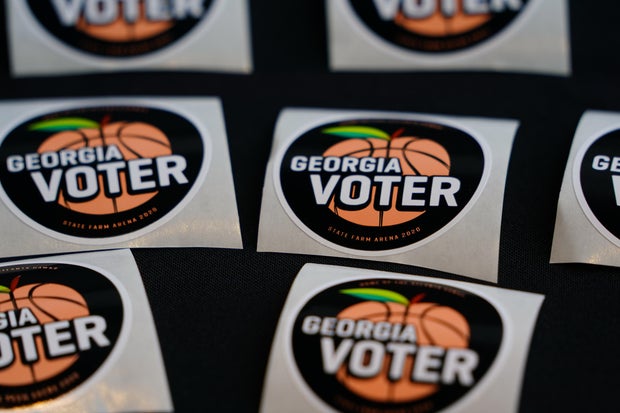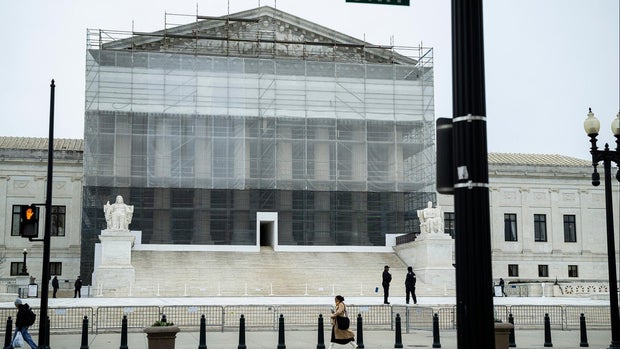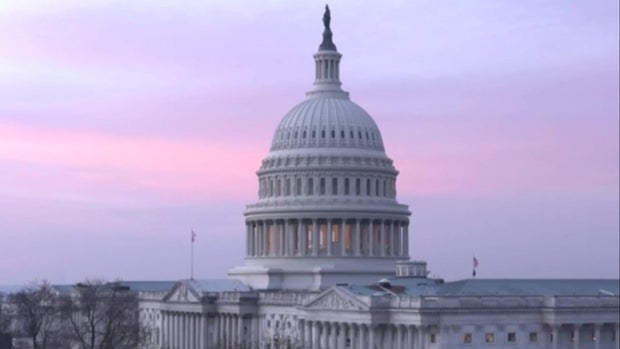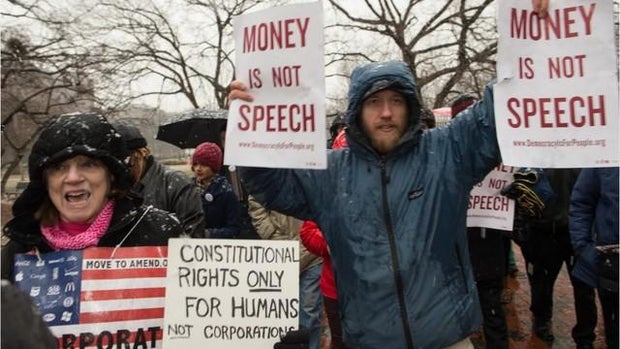Finance
The many faces of Kevin Morris, Hunter Biden’s financial patron

“Who was the real me? I can only repeat: I was a man of many faces.”
Those words by author Milan Kundera could well have been written for Kevin Morris, a critical figure in the unfolding Hunter Biden scandal.
Morris was largely unknown to most people until he emerged as the Democratic donor who reportedly paid the president’s son millions to handle his unpaid taxes and maintain his lavish lifestyle. The Hollywood lawyer and producer portrayed himself as a good Samaritan on a biblical scale — a good man who simply found a desperate stranger on the road and gave him more than $5 million.
His counsel, Bryan M. Sullivan, stated that “Hunter is not only a client of Kevin’s, he is his friend and there is no prohibition against helping a friend in need, despite the inability of these Republican chairmen and their allies to imagine such a thing.”
The statement captures the problem for Morris. It is increasingly hard to determine what Morris was at any given moment: Democratic donor, lawyer, friend. Indeed, that is precisely the problem that some of us have raised for months.
Lawyers are not supposed to personally pay the bills of their clients. Specifically, California Bar Rule 1.8.5(a) states that “[a] lawyer shall not directly or indirectly pay or agree to pay, guarantee, or represent that the lawyer or lawyer’s law firm will pay the personal or business expenses of a prospective or existing client.” They are required to maintain clear representational boundaries. This is also now the subject of a new bar complaint filed by a conservative legal group this week.
Friends have described Morris as a “rule-breaker” and admit that his relationship with Hunter raises eyebrows. “Certainly it’s not careful, but he’s a gunslinger,” one told the Los Angeles Times. “This is how he rolls.”
But the legal ethics rules are designed to avoid gunslinging generally and ambiguity specifically.
Hunter calls him both his lawyer and his “brother.” Lead counsel Abbe Lowell observed, “I have never in any of my representations of any other client — other than someone who is an immediate family member of one of my clients — known anyone who is like Kevin.”
When the relationship began, Morris was playing the role of a loyal Democratic donor.
He was introduced to Hunter at a 2019 political fundraiser by another producer and Democratic deep pocket, Lanette Phillips. Soon thereafter, Morris was giving Hunter copious amounts of money and legal advice. That would include reportedly paying off Hunter’s long-delinquent taxes before criminal charges were filed. It also included covering Hunter’s lavish lifestyle.
Morris may be most eager to avoid the label “democratic donor” because these payments could be viewed as an unreported campaign donation. Morris first appeared during Joe Biden’s campaign for president. Then, on Feb. 7, 2020, shortly after the inauguration, Morris flagged how the taxes represented a “considerable risk personally and politically.” He seems to have sought to resolve that political liability by paying off the taxes. He has insisted it is being treated as a loan.
Those payments would continue, and Morris insists that it was all standard “loan” stuff. Except he is not a bank, and Hunter was routinely called his “client.”
It is also important that these millions are treated as loans because, if they are actually gifts, they could create a new tax problem. Hunter would have to declare such “gifts,” and taxes would be owed on their value.
Few would view Hunter as a good risk for a loan, given his history of stiffing a wide array of businesses and associates. Indeed, he reportedly even struggled to pay for alleged high-end prostitutes. He was even accused of using a credit card connected to his father to pay off an alleged Russian call-girl. Even the art dealer who recently sold Hunter’s art reportedly testified that Hunter never reimbursed him for the costs of the shows.
Those art sales add an interesting twist to the mysterious role of Morris. Recently, art dealer Georges Bergès blew away White House claims that Hunter had been barred from knowing the names of purchasers under a comprehensive ethics system. He admitted that Hunter knew the identity of 70 percent of the purchasers.
It was not hard. Despite news reports of buyers flocking to buy the art, it now appears it was largely Morris who bought the art. Notably, however, Morris reportedly only paid Bergès’ 40 percent commission on the $875,000 purchases. It is not clear whether Morris applied the principal against the outstanding debt. That would be a clever way to treat the money as a loan, if it were used for that purpose. You simply have Hunter crank out dubious pieces of art and arrange for an ally to throw art shows in New York. You then have media allies write how buyers were “floored” by Hunter’s talent.
Finally, you pay the commission on the excessive prices for the art while writing off the value of the art as a type of in-kind payment of the loan. With some valued at close to half a million dollars, many mocked the fact that Hunter was getting more than some Pablo Picasso sales. Yet those inflated prices would be useful to count as direct or indirect payments for the loans.
We still do not know how these purchases or the loans were treated, and whether Morris was acting as a donor, friend or lawyer. Now, Morris is adding a new role to this pile of identities, reportedly supporting a new movie on Hunter Biden.
Call it “Mr. Biden Goes to Washington,” a rewrite of Frank Capra’s classic, only this time the corrupt establishment wins.
In the original movie, a young novice appointed to the U.S. Senate fights the corruption of Washington, where his senior senator has sold access and influence to James Taylor, a wealthy businessman. Taylor scoffs at the notion that the establishment can be challenged. After all, they control the media and what the public will read and hear. As Taylor assured the senior senator, “I’ll make public opinion out there within five hours! I’ve done it all my life…You leave public opinion to me.”
Morris is still fighting to shape public opinion, and, in Hollywood, movies make reality.
Morris “makes public opinion,” and the media can be expected, again, to assist in those efforts.
Many in Washington believe that Hunter’s stunts in holding a press conference defying his subpoena, and later crashing his own contempt hearing, were literally made-for-television moments. These scenes were captured on film and will no doubt be featured in the new film on his heroic struggle.
The question is the audience for the film. Clearly, in the Beltway, audiences are likely to be sobbing with emotion as Hunter fights against inquiries into influence peddling. They will cheer at Joe Biden’s moment channeling John Wayne, when he declared, “No one f**ks with a Biden.”
However, most audience members would not have felt the same thrill if, at the end of the original movie, the corrupt Sen. Joseph Paine and the wealthy Taylor had emerged as the victors, fighting off the do-gooders and “boy rangers” supporting Jimmy Stewart’s main character.
The question is also who would play Morris — or more accurately, how many would have to play this “man with many faces.”
Jonathan Turley is the J.B. and Maurice C. Shapiro Professor of Public Interest Law at the George Washington University Law School.
Copyright 2023 Nexstar Media Inc. All rights reserved. This material may not be published, broadcast, rewritten, or redistributed.

Finance
ATI Promotes Longtime Leader to CFO and SVP of Finance

Rob Foster, incoming CFO of ATI Inc., effective Jan. 1, 2026 [Photo: ATI}
ATI Inc., a Dallas-based manufacturer of high-performance materials for the aerospace and defense industries, announced that James Robert “Rob” Foster will be promoted to senior vice president of finance and chief financial officer, effective January 1, 2026.
Foster succeeds Don Newman, who will serve as strategic advisor to the CEO beginning January 1. As previously announced, Newman will retire on March 1, 2026, and serve in an advisory capacity in that time to allow for a smooth transition.
“Rob is a proven P&L leader with enterprise-wide experience in the areas that matter most to ATI’s continued growth,” Kim Fields, president and CEO, said in a statement. “He brings deep expertise not only in finance but also as an operational leader. Rob played a pivotal role in the successful Specialty Rolled Products transformation, consistently helping ATI to deliver strong returns and shareholder value. I look forward to partnering with him as we enter our next phase of profitable growth.”
Foster, a longtime ATI leader, brings both operational expertise and financial discipline to the CFO role, the company said. He most recently served as president of ATI’s specialty alloys & components business, where he improved efficiency, grew capacity, and advanced the company’s role as a global leader in exotic alloys. Foster previously served as vice president of Finance, Supply Chain, and Capital Projects, overseeing ATI’s global finance organization, capital deployment processes, and enterprise supply chain performance. Earlier in his career, he led Finance for both ATI operating segments and the Forged Products business.
“I’m honored to become ATI’s next CFO,” said Foster. “ATI is well-positioned with a strong balance sheet, focused strategy, and significant opportunities ahead. I look forward to working with our team to drive disciplined investment, operational excellence, and long-term value creation for our shareholders.”
Newman added, “Rob is an exceptional leader who understands ATI’s strategy, operations, and financial drivers. He has delivered transformative results across the organization. I look forward to supporting a seamless transition as we pursue this next step in our succession planning.”
Before joining ATI in 2012, Foster held senior finance roles at API Technologies Corp. and Spectrum Control Inc., where he led ERP implementations, acquisition integrations, and internal control enhancements. He began his career as an auditor at Ernst & Young (EY).
ATI produces high-performance materials and solutions for the global aerospace and defense markets, and critical applications in electronics, medical, and specialty energy.
Don’t miss what’s next. Subscribe to Dallas Innovates.
Track Dallas-Fort Worth’s business and innovation landscape with our curated news in your inbox Tuesday-Thursday.
Finance
Abu Dhabi seeks to build bridge between new media & finance – The Times of India

ABU DHABI: Instead of waiting for the future of media, Abu Dhabi is building it. The city played host this week to leading names from media and entertainment industries at the Bridge Summit, aptly named for seeking to position the emirate at the intersection between new-age media, innovation and investment.The three-day event at Abu Dhabi National Exhibition Centre from Dec 8 to 10 buzzed with energy, new ideas, collaborations and MoU deals as thousands of content creators, media brands, communicators, tech developers, AI innovators, investors and academics — who have been working in isolation — converged to brainstorm ideas, analyse future trends in the media industry and discuss ways to monetise them. How to get around the associated risks of privacy violation, fake news and narratives, defamatory content and online harassment were a natural corollary to the discussions.The idea of Bridge Summit originated at a lunch meeting in Abu Dhabi earlier this year between Sheikh Abdulla Bin Mohammed Bin Butti Al Hamed, chairman of UAE National Media Office, and Richard Attias, the Moroccan events producer associated with the Clinton Global Initiative, Nobel Laureates Conference and Davos Forum. The two discussed how UAE could give media, creators, tech innovators, social media outlets and investors a platform to connect and build the future of media. Eight months later, that dream turned into reality with Bridge Summit.Al Hamed, in his opening address, outlined Bridge Summit’s mission to unite media, technology, finance, and culture in building a more trusted, inclusive, and resilient information order.Speaking to TOI on the sidelines of the summit, Jamal Mohammed Obaid Al Kaabi, DG, UAE National Media Office and Bridge Alliance vice-chairman, said the forum seeks to secure a win-win situation for all, be it govts, media, content creators, social media platforms, gamers, investors and technology providers. “We are trying to help everyone — those who have a story to reach production, a company to reach a customer and govts to understand what’s happening in the market”.He added: “We believe that Bridge can be the brand that people will trust and look at in the future. We can connect it with media initiatives around the world. We believe that positive narrative can be supported through Bridge”.The global media and entertainment industry generated over $2.8 trillion last year, with gaming alone rivaling film and television at nearly $200 billion. Streaming continues to reshape consumption, while nearly 70% of content creators are already using AI tools.Rubbing shoulders at the summit were former heads of state, journalists, representatives of social media platforms, AI innovators, gaming developers, entrepreneurs and media influencers from across the globe; actors Priyanka Chopra Jonas and Idris Elba and footballer Gerard Pique lent it star power.Over three days of fireside chats, panel discussions, workshops and MoU signing, content creators and influencers took lessons from experts and peers on how to tell their stories better and hold their audience’s attention till the last frame.With artificial intelligence (AI) tools revolutionising the media space and content creation industry, engagements delved into how to maintain a judicious balance between human intelligence and artificial intelligence while tailoring content to suit users’ preferences and attention span.Sessions reflected on how the traditional print and TV journalism is being rapidly taken over by digital news content. Justin Smith, CEO of independent global news company Semafor, predicted that human journalist will continue to be relevant as the primary resource for original information, but must learn to harness the power of AI to add value. Richard Attias, who is on the Bridge board of directors, had a word of caution: “Human intelligence needs to always challenge artificial intelligence. We should not be losing the control of AI, which is like a robot”.According to UK journalist and broadcaster Emily Maitlis, agenda-based journalism is inevitable in the age of social media as one with a louder voice and reach, who can put out his version of the story more convincingly, tends to control the narrative. Adeline Hulin, chief of media and information literacy unit at Unesco, revealed that a global survey had found that 62% users don’t do any fact-checking before forwarding information online; most content creators are unaware of the international standards of freedom of expression; and just 20% users report hate speech. “Unesco has developed a global curriculum for media information literacy. We are working to integrate it with formal education and getting local partners to organise hackathons,” she said.Former deputy PM of UK Oliver Dowden advocated industry-led responsibility over sweeping regulation, saying there should be “clear guardrails” as creator content becomes the primary source of information for young audiences.Al Kaabi said Bridge Summit is just the beginning and “pop up” events will be held each coming quarter across America, Asia, Europe and Africa. “We want to hold a mini-Bridge in India. Also, there shall be more of Bollywood, not just Priyanka, at the next edition of the summit here,” he said.(The writer was in Abu Dhabi at the invitation of Bridge Alliance)
Finance
Supreme Court case could reshape campaign finance — and open new money pathways into Georgia’s biggest races

A major Supreme Court case could upend how money flows into federal elections, and Georgia may feel the first impact.
Republican Party committees are asking the Court to strike down a longstanding limit on how much political parties can coordinate their spending with candidates. If the justices side with them, experts say it would create new pathways for wealthy donors to steer massive checks into individual battleground races — including in Georgia, one of the country’s most competitive political states.
“It would open the floodgates for the biggest donors across the country to funnel money through the parties into specific Senate or House races,” said Eric Petry, counsel at the Brennan Center for Justice. “That problem would get even worse in places like Georgia.”
The Supreme Court heard arguments this week.
What’s at stake: millions in earmarked political spending
Under current federal rules, parties can assist their candidates but only up to capped limits designed to prevent corruption and donor influence.
If those caps disappear, Petry says a single donor could write a check for over $1 million and effectively tell a national party to direct it toward a specific candidate.
“That poses really significant corruption risks,” he said.
Critics warn that political parties could become conduits for wealthy funders seeking to maximize influence in targeted states, especially fast-changing battlegrounds like Georgia.
Why Georgia could become ground zero
Georgia’s U.S. Senate races routinely draw national attention and tens of millions of dollars in outside spending. Metro Atlanta’s rapid political shifts — and fierce competition statewide — make the state an attractive target for national donors.
Already, Georgia saw historic spending in judicial elections last year, with outside groups pouring money into state Supreme Court contests. Weakening federal guardrails could accelerate that trend.
“We already see big donors funneling tens or hundreds of millions into Super PACs,” Petry said. “If they can now funnel money through political parties — and have that money directly coordinate with candidates — that’s a very real concern.”
Such a ruling could also intensify power struggles within Georgia politics. Secretary of State Brad Raffensperger recently criticized the state’s campaign laws, saying current limits give Lt. Gov. Burt Jones an advantage as both eye the 2026 governor’s race.
Though not weighing in on the Raffensperger dispute directly, Petry said candidates nationwide are “pushing the envelope” to find ways around weak or uneven finance rules, especially as federal regulators remain gridlocked.
A broader crisis of trust in elections
Public concern over the influence of money in politics has never been higher. Large bipartisan majorities — often 70% to 80% of Americans — say wealthy donors have too much sway over elected officials, according to polls cited in the Brennan Center analysis.
Petry said a sweeping deregulatory ruling from the Court could deepen that divide.
“If the biggest donors exert even more influence than they currently do, I would expect public confidence in the campaign finance system to continue to decrease,” he said.
But paradoxically, he added, public frustration might also fuel a renewed push for reforms such as transparency rules or public financing.
Could Congress step in? Not anytime soon.
Even if the Court strikes down the limits, Petry says change isn’t likely to come quickly.
“Realistically, there’s not much chance of legislative action before the 2026 midterms,” he said. “Congress has shown that it doesn’t move quickly — if it moves at all — in this area.”
He argues that the only long-term fix may be a constitutional amendment allowing lawmakers to fully regulate campaign spending — something the Brennan Center says has broad public support.
A ruling that could rival Citizens United
If the justices side with the challengers, legal experts say it could become the most consequential campaign finance ruling since Citizens United, the 2010 decision that unleashed unlimited outside spending.
For Georgia — where elections are increasingly decided by razor-thin margins — the consequences could be immediate and far-reaching.
-

 Alaska6 days ago
Alaska6 days agoHowling Mat-Su winds leave thousands without power
-

 Politics1 week ago
Politics1 week agoTrump rips Somali community as federal agents reportedly eye Minnesota enforcement sweep
-
Ohio1 week ago
Who do the Ohio State Buckeyes hire as the next offensive coordinator?
-

 Texas6 days ago
Texas6 days agoTexas Tech football vs BYU live updates, start time, TV channel for Big 12 title
-

 News1 week ago
News1 week agoTrump threatens strikes on any country he claims makes drugs for US
-

 World1 week ago
World1 week agoHonduras election council member accuses colleague of ‘intimidation’
-

 Washington3 days ago
Washington3 days agoLIVE UPDATES: Mudslide, road closures across Western Washington
-

 Iowa5 days ago
Iowa5 days agoMatt Campbell reportedly bringing longtime Iowa State staffer to Penn State as 1st hire
































